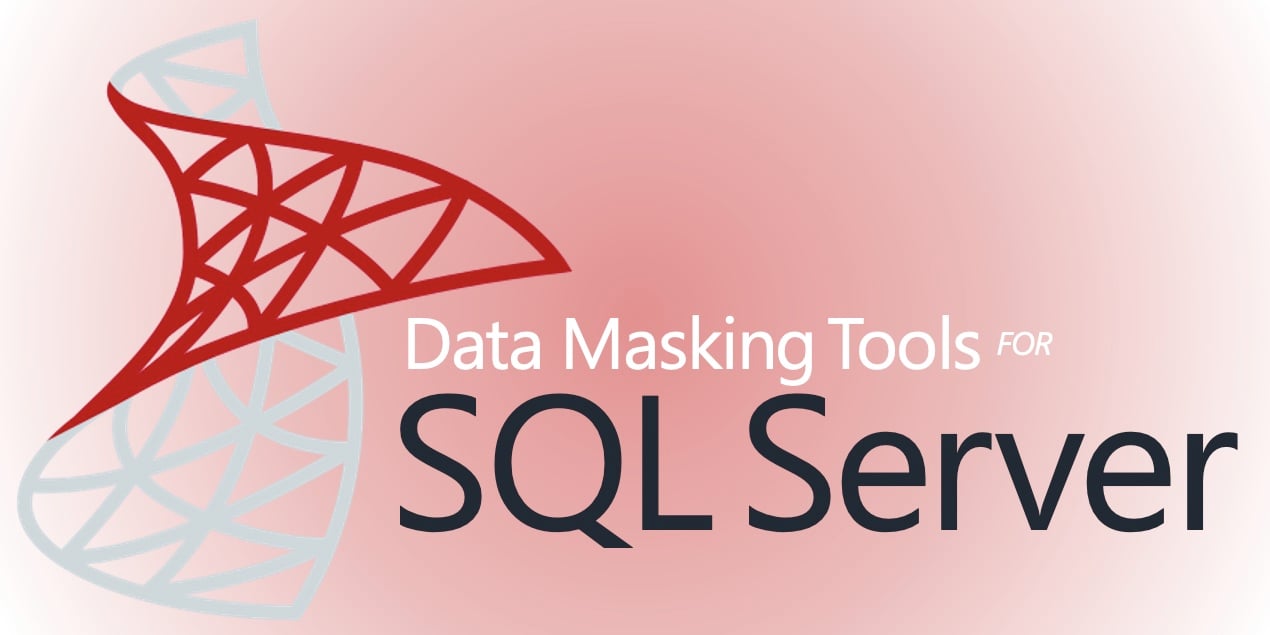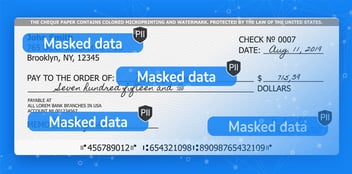Data masking tools for SQL Server are software solutions that automatically discover and mask any sensitive data found in Microsoft SQL Server databases.
What are data masking tools?
Data masking tools play a key role in any test data management strategy.
Strict privacy regulations like GDPR and HIPAA mandate that organizations must minimize the presence and use of sensitive data. That means that any Personally Identifiable Information (PII) found in testing and analytics environments needs to be secured.
Because Microsoft SQL Server databases are widely used by enterprises to store raw data, any Personally Identifiable Information (PII) extracted from them needs to be masked before ingestion into development or testing environments.
Data masking tools for SQL Server ensure that developers can access all the non-sensitive real data they need and substitute fake data for sensitive data when relevant. Data masking software obfuscates sensitive information within databases – transforming sensitive data values into realistic yet safe equivalents.
Get Gartner’s guide to data masking FREE.
Why masking SQL server data is important
Data masking tools for SQL Server are vital to the protection of, and unauthorized exposure to, sensitive data.
SQL Server is widely used as a central database in software development – instrumental for both dev data storage and data management. It’s also considered a cornerstone of CI/CD pipelines – enabling structured queries of data, supporting transactions, and ensuring data integrity. Yet compliance with data protection laws, like CCPA, GDPR, HIPAA, and PCI-DSS, require that sensitive data stored in SQL Server be masked.
Data masking preserves data utility for testing or analytics by applying techniques like data encryption, shuffling, or substitution, to mask sensitive data, including:
-
Personally Identifiable Information (PII), such as names, dates of birth, passport and social security numbers, addresses, and phone numbers
-
Protected Health Information (PHI), as outlined under HIPAA and other healthcare privacy regulations that limit access to medical information
-
Payment card information, including credit/debit card numbers, expiration dates, and security codes, as stipulated by PCI-DSS and other relevant regulations
How to mask data for SQL Server
SQL Server is equipped with several manual masking methods, depending on the sensitivity of the data in question and specific regulatory or development needs. There are also real-time data masking techniques and static data masking techniques available (see below).
One manual method uses the UPDATE statement to substitute sensitive data values with randomized values, using functions like RAND or REPLACE. Alternatively, TRUNCATE or DELETE statements can be used to remove identifiable data while still preserving structure.
No matter how masking is accomplished, it’s also critical to address the issue of data access controls and permissions. To do so, developers can use SQL Server’s integral security features to define roles and permissions, and thus effectively control who can access the masked data. The more sophisticated 3rd-party data masking tools for SQL Server may have Role-Based Access Control (RBAC) and/or Attribute-Based Access Control (ABAC).
Overall, the data masking process in SQL Server requires careful planning. It’s important to implement data masking techniques in a way that safeguards sensitive information, while still retaining data integrity and usefulness.
Real-time data masking tools for SQL Server
Dynamic data masking leaves original data in the SQL Server database unchanged yet displays masked data on-the-fly to both users and applications.
For example, a patient’s home address in a hospital SQL Server database would remain “123 Cherry Tree Street, Anytown, IN”. But when the home address value was displayed to a user or application, the value would be “XXX YYYY Street, ZZZZ, AA.”
This technique exposes PII to authorized users such as software testers – who may require the names of real cities, street addresses, and zip codes, for example – but hides it from everyone else.
It’s worth noting that real-time data masking still requires that the original sensitive data be fully protected, in line with regulatory requirements. Even if a database containing sensitive data is copied to a test environment – and automated data masking is used for testing – the database itself is fully subject to data privacy regulations and liabilities.
In fact, the very act of copying sensitive data to a test environment can be a violation of regulations.
Thus, real-time data masking may be best suited to secure live environments, in which unauthorized users don’t need to see any sensitive information, period.
Test environment security is also a serious consideration. Potential holes in test environment security – like shared access to administrator accounts, vulnerabilities in the SQL Server environment, or defects in the masking software – could enable unauthorized access to sensitive data.
Static data masking tools for SQL Server
Static data masking is when original sensitive data is overwritten or deleted, then either replaced with realistic yet fictitious data (so that data values appear unchanged) or simply redacted. This method can dramatically enhance data security since sensitive data simply ceases to exist in the database.
However, the static data masking process presents its own challenges. It involves moving sensitive data to a staging area for masking, which can be resource-intensive, time-consuming, and vulnerable to attack while waiting to be masked. Also, creating masked data that is both realistic and usable is complex due to data constraints, dependencies, and characteristics. This is where 3rd-party data masking tools come in handy.
Microsoft's static data masking utility for SQL Server, for example, was withdrawn due to severe technical shortcomings. One of the reasons for this was that simple data value substitutions risk breaking applications or violating database constraints (unlike real-time data masking where the values remain unchanged). Thus, static data masking requires a comprehensive approach to ensure data integrity, adhere to regulatory constraints, and maintain data usability.
Entity-based data masking tools for SQL Server
Entity-based data masking technology enables a more sophisticated approach to masking data in SQL Server and every other database.
Tools based on this technology automatically discover and ingest relevant data from ANY source by business entity (customer, order, device, or anything else that’s important to the business). They mask sensitive data inflight according to pre-defined rules to deliver trusted data to authorized users based on RBAC.
Referential integrity and semantic consistency are maintained across systems, to ensure that the masked data in SQL Server as well as other databases (including NoSQL) always remains consistent and complete.
Learn more about K2view entity-based data masking tools.













